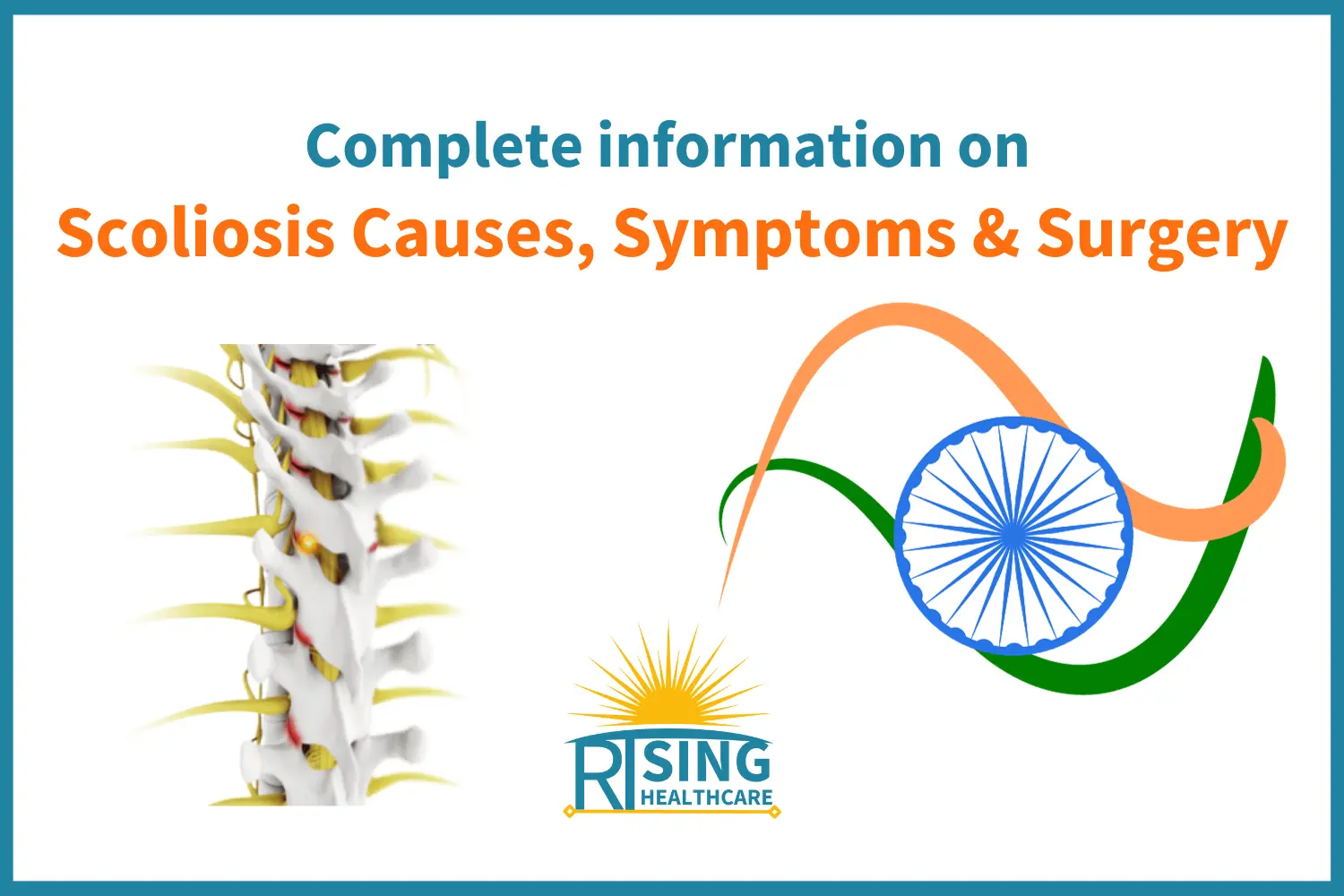
Scoliosis: Causes, Symptoms, Surgery, and Non-Surgical Treatments
Introduction
Scoliosis is a condition that affects the curvature of the spine, causing it to bend sideways. It can develop in people of all ages, but it is most commonly diagnosed in adolescents. This article will explore the causes, symptoms, and surgical and non-surgical treatment options for scoliosis, with a focus on scoliosis correction and the innovative procedure known as vertebral body tethering.
Contents
Understanding Scoliosis
What is Scoliosis? Scoliosis is a spinal condition characterized by an abnormal curvature of the spine. Instead of a straight line, the spine may curve to the left or right in a C or S shape. This curvature can range from mild to severe and can cause a range of health issues if left untreated.
Causes of Scoliosis The exact cause of scoliosis is not always clear. It can be categorized into two main types: idiopathic scoliosis and non-idiopathic scoliosis.
- Idiopathic Scoliosis: This is the most common type and typically occurs in adolescents without a known cause. It may have a genetic component, as it can run in families.
- Non-idiopathic Scoliosis: This type of scoliosis has a specific underlying cause, which may include congenital spinal abnormalities, neuromuscular conditions, or injuries.
The Cost of Knee Replacement Surgery
Factors Influencing Knee Replacement Surgery Cost
The cost of knee replacement surgery can vary significantly depending on several factors:
- Type of Surgery: Full knee replacement surgery typically costs more than partial knee replacement surgery.
- Location: The cost of surgery may vary based on the geographical location of the healthcare facility.
- Surgeon’s Experience: Highly experienced surgeons may charge higher fees.
- Hospital Fees: Hospital charges for the surgery, including room and board, can affect the overall cost.
- Implant Choice: Different types of prosthetic implants are available, with varying costs.
Average Knee Replacement Surgery Cost
On average, the cost of knee replacement surgery in the United States ranges from $20,000 to $50,000 per knee. This cost includes the surgeon’s fee, hospital charges, anesthesia, and the prosthetic implant.
Insurance Coverage
Most health insurance plans cover knee replacement surgery to some extent. However, the level of coverage may vary, so it’s essential to check with your insurance provider beforehand. Be prepared to pay for deductibles, copayments, and any out-of-pocket expenses.
Financial Assistance Options
If you’re concerned about the cost of knee replacement surgery, there are financial assistance options available. These may include:
- Medicare or Medicaid: Eligible individuals may receive coverage for knee replacement surgery through these government programs.
- Charitable Organizations: Some nonprofit organizations provide financial assistance to individuals in need of knee replacement surgery.
- Hospital Payment Plans: Many hospitals offer payment plans to help patients manage the cost of surgery over time.
- Medical Tourism: Some patients choose to undergo knee replacement surgery in countries where the procedure is more affordable.
Identifying Scoliosis
Symptoms of Scoliosis Scoliosis symptoms can vary depending on the severity of the curvature. Common signs and symptoms include:
- Uneven shoulders or hips
- A visibly curved spine
- Uneven waistline
- One shoulder blade that appears more prominent than the other
- Back pain or discomfort
- Fatigue or muscle weakness
If you or your child experiences any of these symptoms, it’s essential to seek medical evaluation for an accurate diagnosis.
Diagnosing Scoliosis
Diagnosis of Scoliosis Diagnosing scoliosis typically involves a combination of medical history review, physical examination, and imaging tests. The most common imaging test used for diagnosis is an X-ray, which allows doctors to measure the degree of spinal curvature accurately.
Scoliosis Treatment Options
1. Scoliosis Treatment without Surgery
Scoliosis treatment is tailored to the individual’s age, the severity of the curvature, and the cause of scoliosis. In many cases, especially for mild to moderate scoliosis, non-surgical approaches are preferred.
a) Observation and Monitoring: For individuals with mild scoliosis (curvature less than 25 degrees) and those who are still growing, the “watch and wait” approach may be recommended. Regular monitoring with X-rays allows doctors to track the progression of the condition without immediate intervention.
b) Physical Therapy and Exercise: Physical therapy and specific exercises can help improve posture, strengthen core muscles, and alleviate discomfort associated with scoliosis. Physical therapists can provide guidance on exercises tailored to the individual’s condition.
c) Bracing: Bracing is often recommended for adolescents with moderate scoliosis (curvature between 25 to 40 degrees) who are still growing. The brace helps slow down the progression of the curvature and may need to be worn for several hours each day.
2. Vertebral Body Tethering (VBT)
What is Vertebral Body Tethering (VBT)? Vertebral Body Tethering, often referred to as VBT, is a revolutionary surgical procedure for scoliosis correction. Unlike traditional spinal fusion surgery, which permanently fuses vertebrae together, VBT offers a more flexible and motion-preserving solution.
How Does VBT Work? During a VBT procedure, the surgeon attaches a flexible cord or tether to the affected vertebrae. This tether gently guides the growth of the spine, allowing it to straighten over time. Importantly, VBT maintains spinal flexibility, which is not possible with traditional fusion surgery.
Benefits of VBT:
- Preserves spinal flexibility and motion.
- Reduces the risk of long-term back pain associated with fusion surgery.
- Suitable for adolescents with moderate scoliosis (typically 40 to 70 degrees).
- Shorter recovery time compared to traditional spinal fusion surgery.
- Minimally invasive procedure, resulting in smaller incisions and less scarring.
3. Scoliosis Correction
Traditional Surgical Approach: Spinal Fusion In cases of severe scoliosis (curvature greater than 70 degrees) or when non-surgical treatments have not been effective, surgery may be necessary. The most common surgical approach for scoliosis correction is spinal fusion.
How Spinal Fusion Works: During spinal fusion surgery, the surgeon fuses together the affected vertebrae using metal rods, screws, and bone grafts. This eliminates motion in the curved part of the spine, preventing further curvature progression. While effective at correcting scoliosis, spinal fusion surgery does limit spinal flexibility.
Conclusion
The treatment approach for scoliosis should be individualized based on factors such as age, the severity of curvature, and the patient’s overall health. Non-surgical methods, including observation, physical therapy, and bracing, are often the first line of treatment, especially for mild to moderate scoliosis. Vertebral Body Tethering (VBT) offers a promising alternative for those who need surgery but want to maintain spinal flexibility. In cases of severe scoliosis, traditional spinal fusion surgery may be the best option for achieving scoliosis correction.
If you or a loved one is living with scoliosis, it’s crucial to consult with a spine specialist who can provide a comprehensive evaluation and recommend the most appropriate treatment plan. Early intervention and tailored care can help manage scoliosis effectively, ensuring a better quality of life for those affected by this condition.

